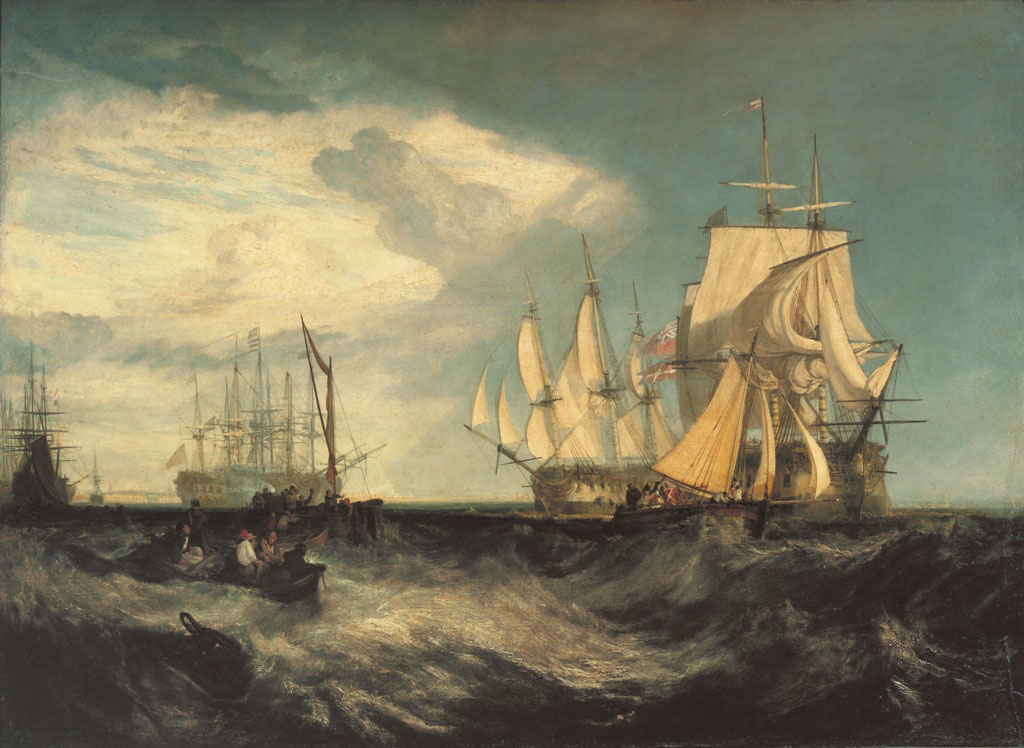One of the most impressive paintings at the "Turner from the Tate" exhibition now on at the Tokyo Metropolitan Art Museum is "Spithead: Two Captured Danish Ships Entering Portsmouth Harbour" (1808).
In some ways it is a run-of-the-mill, realist sea painting of the type common in those days and earlier centuries. It is certainly not what people think of as "Turneresque," an adjective that refers to the blurry, proto-Impressionistic golden haze-like quality of which the English artist became a master. But what makes this large canvas impressive is the way Joseph Mallord William Turner "sculpts" the sea, making it almost into a landscape.
The ships in the middle distance sit along a straight line, creating a sense of stability that evokes "The Wooden Walls of Old England," a nickname for the Royal Navy that was then engaged in resolutely blockading the European continent, which was dominated by the French Emperor Napoleon. But this impression of maritime solidity is challenged by the small boats in the foreground. These bob up and down around a great hollow of a wave that also reaches down to us, the viewers — most of the picture is above our eye line, creating the impression that we might be overwhelmed by the next movement of the sea.


















With your current subscription plan you can comment on stories. However, before writing your first comment, please create a display name in the Profile section of your subscriber account page.